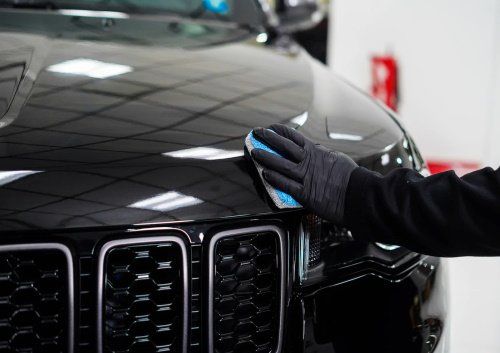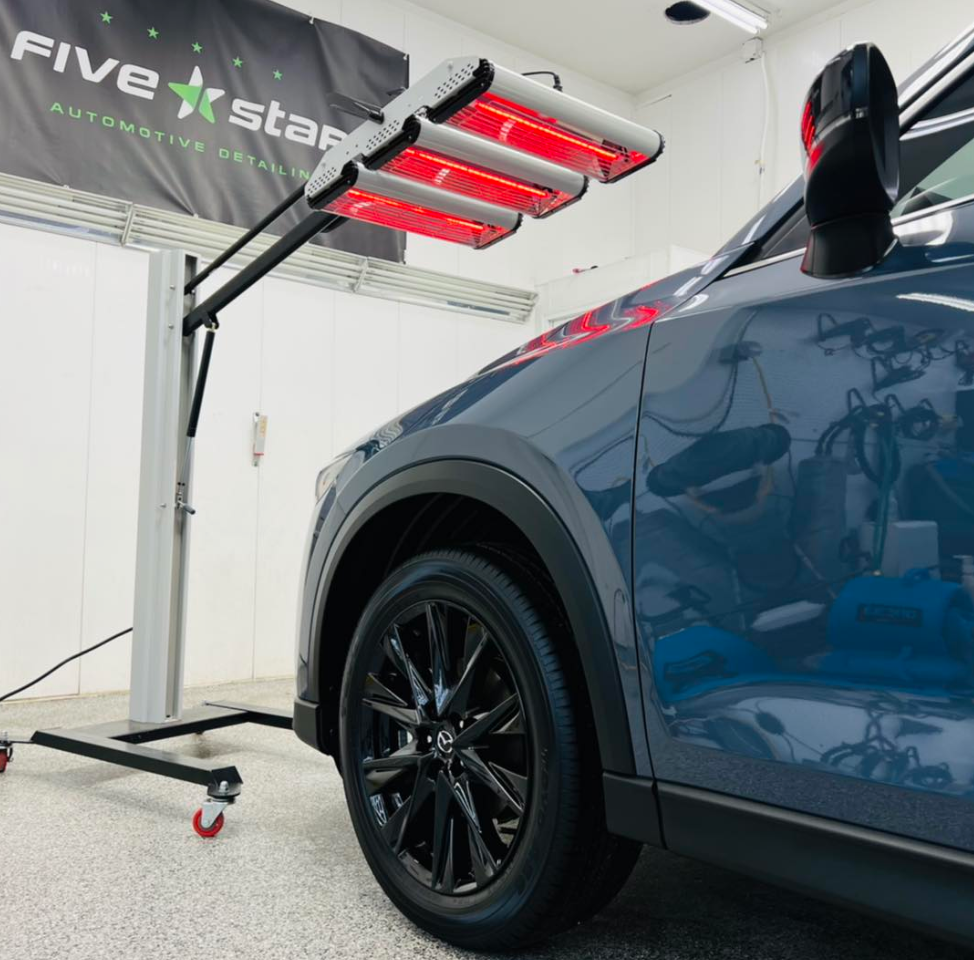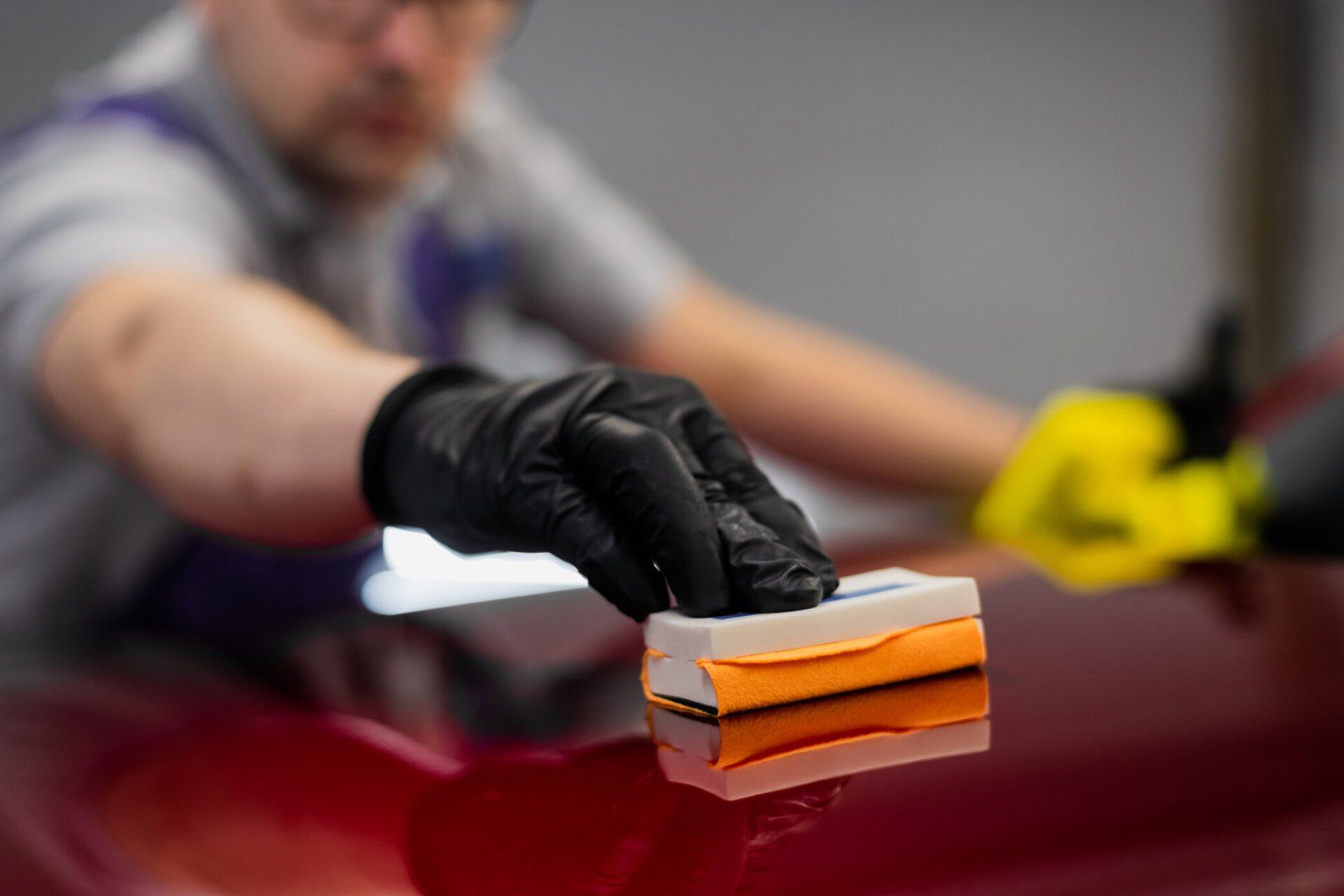A frequently asked question is the distinction between wax and ceramic coatings. In the world of paint protection, there is understandably some ambiguity surrounding this topic, and these terms are frequently used interchangeably. People understand that wax is a paint sealant; both are paint protection methods for a vehicle's typical clear coat.
Though this is mostly true, with recent advances in detailing technology, distinct differences between the two have emerged. Both waxes and ceramic coatings have distinct advantages that make them especially well-suited to a wide range of applications.
What is a Car Wax?
Automotive wax is a water-repellent, thin layer added to enhance cars' factory paint work. For decades, natural wax products made from carnauba wax were the go-to choice for adding improved shine and a warm glow to a car's exterior paint.
Traditional wax is available in paste, liquid, or spray form and is simple to apply for the do-it-yourselfer. They work best after a thorough cleaning and polishing to ensure that the paint is smooth on the clear coat of the vehicle. Waxing your car should be done every four to six weeks, depending on:
- The exterior paint surface of your vehicle, before applying the wax.
- How often do you drive it.
Benefits of Car Wax
- UV ray resistance: Because natural carnauba wax is UV ray resistant, it offers complete sun protection. UV sun rays can cause discoloration, oxidation, and fading of the vehicle's exterior surfaces over time. The higher melting temperatures of wax ensure that your car is not damaged even if it is left outside on a hot day.
- Wax is hydrophobic, meaning it is resistant to water. It can repel water, such as rain, which can damage your vehicle's paint.
- It has an excellent mirror shine that makes it aesthetically pleasing.
- Traditional carnauba wax is also available in spray form.
What is Ceramic Coating?
Ceramic car coatings are a new liquid polymer paint protection film that contains silica, quartz, and silicon dioxide and has the same natural protective qualities as wax. It seals its pores by clinging to the paint surface with nanoparticles. The main task of waxing is beautifying your car's paint job.
Nano-ceramic coatings, on the other hand, are primarily factory paint sealants that provide a protective shield against mineral deposits, chemical damage, acid rain, UV rays, and contaminants. Ceramic coatings behave differently than wax coatings. When applied to the vehicle paint surface, they produce a curing property. The ceramic coating creates a hard shell over the paint by forming a chemical bond with it.
The ceramic coating, on the other hand, is more difficult and expensive to apply than wax. A professional ceramic coating job necessitates significant downtime and money. You might have to give up your car for up to a week. While you could rent a car for thousands of dollars while you wait, a ceramic coating is an investment that is well worth the trouble, time, and money.
If a ceramic coating is applied incorrectly, contaminants can become trapped. For paint correction, this would require removing the whole ceramic coat. That is why a professional in a controlled environment is required. The paint correction process also necessitates the use of a qualified professional detailer.

Benefits of Ceramic Coating
- Durable nano-coatings are an excellent choice for a more durable protective layer. This is because they are thicker than wax, providing better resistance to etching and micro-marring.
- Keep your car cleaner for longer - They are easier to clean because the ceramic coating repels dirt consistently. This is due to their molecular-level substance work, which ensures the even and smooth operation of your vehicle. This property of the nano-ceramic coating also prevents swirl marks due to the constant washing with car wash shampoos.
- Low maintenance - A nano-coating is a low-maintenance paint protection option because it lasts longer.
- Ceramic coating products also include ceramic coating spray.
Is Traditional Car Wax or Ceramic Coating Better?
When it comes to car wax vs. ceramic coating for cars, each has advantages and disadvantages that make one a better choice than the other. When deciding between the two, you should consider which is best for you in terms of:
- Cost - Determine your detailing budget before deciding between traditional car waxing and ceramic coating. In any case, adding a layer of protection to your car's paint job is a worthwhile investment that will allow you to save money for future cosmetic repairs.
- Your Car's Condition - Each of these vehicle paint protection services will depend on the current condition of its paint job.
- Purpose - Consider what you are going for and need from car detailing services. Is it added protection, shine, or something else?
- Duration - Determine whether you need a short-term or long-term solution.
- Frequency of use - Based on how frequently you drive your vehicle, one or the other car detailing service makes more sense.
Can a ceramic coating replace wax? Both traditional car wax and ceramic coatings are great options for protecting your vehicle's paint from inevitable foreign objects and debris. For instance, if you do not want the hassle of reapplying every other month; ceramic coating can be a better option for you.
For those seeking the ultimate in long-lasting shine and protection, a combination of car wax and ceramic coating application is recommended. However, for the best results, hire a professional car detailer rather than do it yourself.
Are You Looking for High-Quality Car Waxing or Ceramic Coating?
Five Star Automotive Detailing is a superb detailing studio located in Rochester, Minnesota. We have a highly skilled team of detailing specialists who are experts at applying ceramic coating to any car's surface. We provide customized care based on the needs of each vehicle.
Visit us at 3820 21st S.E. Rochester, Minnesota 55904, United States, for more information on the difference between car wax and ceramic coating and to schedule a free consultation. You can also reach us by phone at 507-213-3561.






